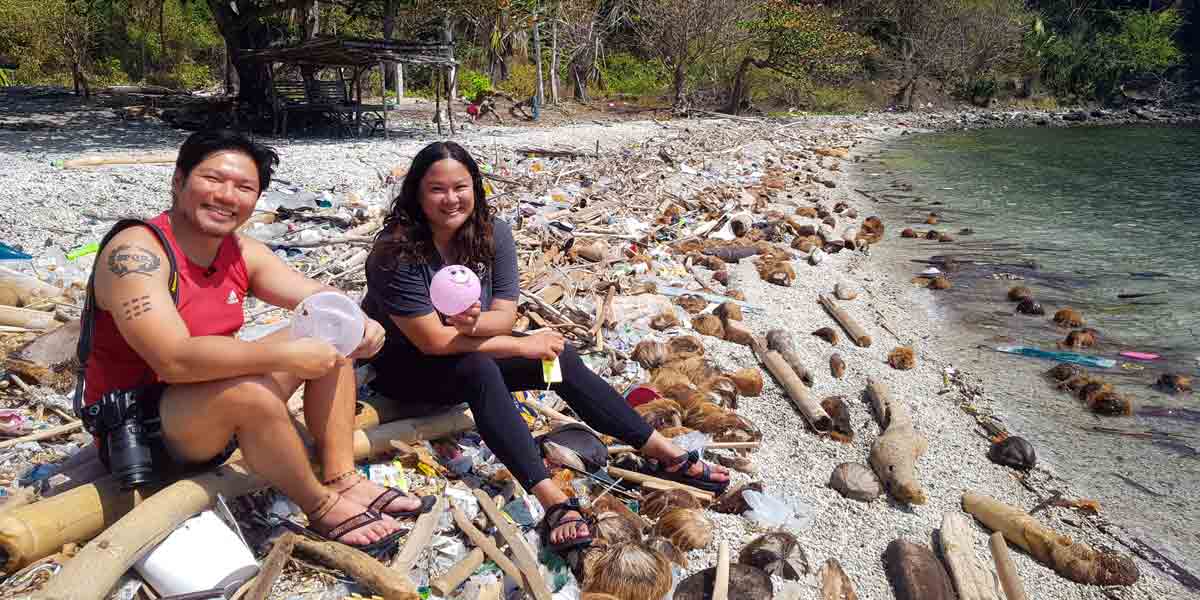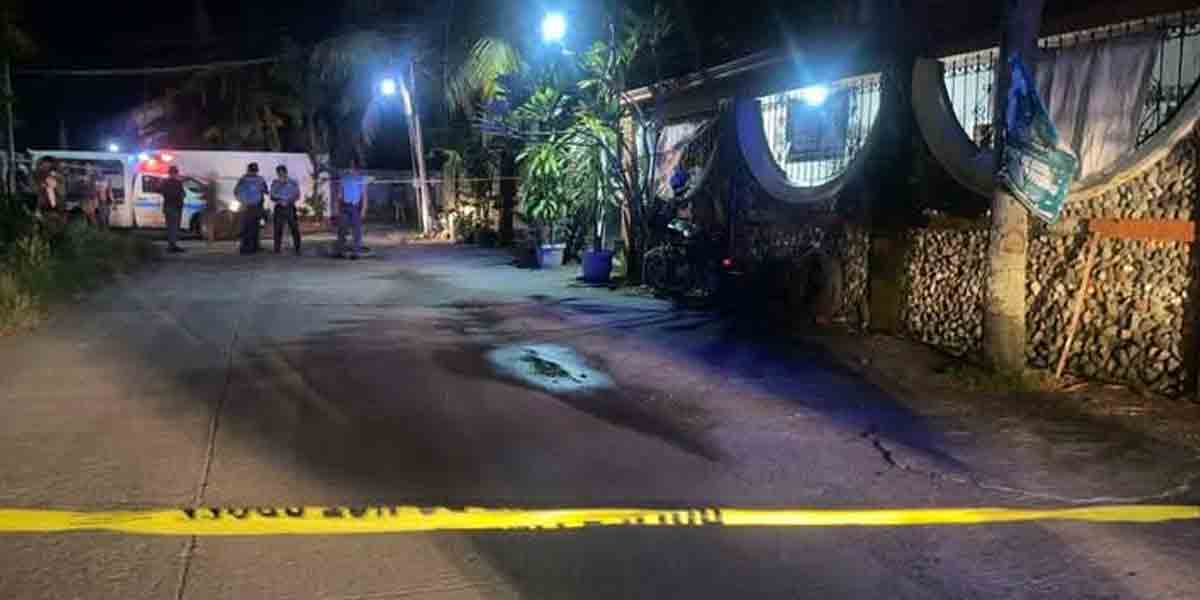 WE, ALUMNI of the University of the Philippines School of Economics, express our grave concern over House Bill No. 8858, otherwise known as An Act Expanding the Scope of the Reformation and Rehabilitation of Children in Conflict with the Law and Strengthening the Social Reintegration Programs.
WE, ALUMNI of the University of the Philippines School of Economics, express our grave concern over House Bill No. 8858, otherwise known as An Act Expanding the Scope of the Reformation and Rehabilitation of Children in Conflict with the Law and Strengthening the Social Reintegration Programs.
We likewise voice our serious concern over the Senate counterpart bills that are similar in content to House Bill 8858. These are Senate Bills 1603 and 2026.
We submit a position that is guided by reason, science and evidence. We also wish to provide economic insights into this issue.
The most critical and controversial provision in House Bill 8858 (and this also applies to the above-mentioned Senate bills) is the provision (HB Section 4) amending the current law, by lowering the minimum age of responsibility of children in conflict with the law from the current 15 years of age to 12 years of age. Further, HB Section 2 states that a child 12 years of age and above but
below 18 years of age who has acted with discernment shall be subjected to the appropriate intervention and diversion proceedings…
Allow us then to enumerate and explain the reasons why we object to the lowering of the minimum age of responsibility of children in conflict with the law (previously termed minimum age of criminal responsibility) to 12 years old.
- Discernment
House Bill 8858 subjects the child who acts with discernment to intervention and diversion proceedings.
The standard dictionary definition of discernment is: The act or process of exhibiting keen insight and good judgment. The capability to discern thus goes beyond having access to full information and being rational.
Discernment requires intellectual, psychological, and emotional maturity, which is a challenge to children and adolescents.
However, Section 22 of the existing law, which House Bill 8858 retains, is vague in its definition and determination of discernment, except to say that the local social welfare and development officer shall conduct an initial assessment to determine the appropriate interventions and whether the child acted with discernment, using the discernment assessment tools developed by the DSWD [Department of Social Welfare and Development]. (1) Section 8 of House Bill No. 8858 seeks to add context through an amendment to include identification of physical and mental health issues, substance abuse and family issues in the assessment, although it is unclear if the presence of these issues will be considered as mitigating circumstances in determining the childs discernment.
We wish to cite evidence drawn from studies taking into account brain and behavioral development in the Philippine context, which shows that the age of discernment for children is between 15 and 18 years old.
For reference, see:
1) Pamantasan ng Lungsod ng Maynila, Beyond Innocence,1997, a research commissioned by the Philippine governments Council for the Welfare of Children and
2) Philippine Action for Youth Offenders, Arrested Development, 2002. Beyond Innocence sets the age of discernment for Filipino schoolchildren at 15 years old. Arrested Development establishes the discernment age of out-of-school children at 18 years old.
More recently, the Philippine Pediatric Society states in its position paper (undated) that: Neuroscience research has proven that the brain does not fully develop until the age of 25.
This is in agreement with Johnson Sara B., Blum, Robert W., and Gledd, Jay N., Adolescent Maturity and the Brain: The Promise and Pitfalls of Neuroscience Research in Adolescent Health Policy, J Adolesc Health, 2009 September 45(3): 216-221. To quote this journal article: Longitudinal neuromanaging studies demonstrate that the adolescent brain continues to mature well into the 20s.
This is the kind of evidence that informs the current legislation titled
Juvenile Justice and Welfare Act of 2006 or Republic Act (RA) No. 9344, which states that a child fifteen (15) years of age or under shall be exempt from criminal liability. Further, RA No. 9344 says that a child above fifteen (15) years but below eighteen (18) years of age shall likewise be exempt from criminal liability and be subjected to an intervention program, unless he/she has acted with discernment .
Some quarters will point out that United Nations Convention on the Rights of the Child General Comment No. 10 (UN CRC GC 10) considers the minimum age of criminal responsibility below the age of 12 years as internationally acceptable. But in the same breath (paragraph 32), it says: States parties are encouraged to increase their minimum age of criminal responsibility to a higher level. Moreover, in paragraph 33, the UN CRC GC 10 urges States parties not to lower their minimum age of criminal responsibility to the age of 12.
Clearly then, reducing the minimum age of criminal responsibility in the Philippines from the present age of 15 years old to the age of 12 years old is a serious retrogression. House Bill 8858 and Senate Bills 1603 and 2026 ignore the evidence drawn from the specific Philippine context and from neuroscience research, and they violate the spirit of the international convention.
- Consistency of Legislation
Legislation concerning children and adolescents must be consistent with other laws. Philippine legislation and other rules are aware of the constraints on the intellectual, psychological, and emotional maturity of adolescents.
Examples abound. One cannot get married if he or she is under the age of 18 years old. And one must be at least 21 years old to get married without parental consent. A requirement for voting is that the citizen should be 18 years of age and above. The minimum legal age is 18 years old for any person to buy, sell, or smoke tobacco and alcohol products. In a word, the age of 18 years is the age of majority in the Philippines.
In short, House Bill 8858 and Senate Bills 1603 and 2026 contradict the intent and substance of other pieces of legislation that govern the behavior of adolescents.
Some make the fuss that House Bill 8858 and Senate Bills 1603 and 2026 distinguish the treatment as between adults and adolescents (from 12 years of age to below 18 years of age). Adolescent offenders who commit serious crimes will be placed mandatorily within a youth care facility or Bahay Pag-asa, while adolescent repeat offenders (not necessarily of serious crimes) shall undergo an intensive intervention program that includes placement in a youth care facility or Bahay Pag-asa (Sections 4 and 5 of HB 8858). By definition, the physical mobility of residents of these centers may be restricted pending court disposition of charges against them (Sections 4.s and 4.t of RA 9344). The existing law allows the imprisonment of not more than 12 years (as maximum penalty) but also authorizes institutional care and custody as part of a court-level diversion program (Sections 37 and 31.c.5 respectively of RA 9344).
- Effectiveness and Efficiency
We question the effectiveness and efficiency of reducing the minimum age of criminal responsibility to 12 years old in deterring crime and participation of juveniles in criminal activities.
The proposal merely addresses the technique (or the technology) that uses juveniles as accessories to commit crimes. But criminals will adapt and will use a different strategy and technique in response to the change in the rule. In designing rules, we anticipate the change in behavior of subjects. Behavior has variations and can move towards different directions, depending on the rule design.
Like any other person, a criminal has a feasible set of alternatives, constrained by his human, financial and technological resources. In this case, lowering the age of criminal responsibility does not deter commission of the crime because the criminal will look for an alternative way to commit the crime. He can, for example, deploy other children who are below 12 years old to commit the crime!
Using children between the age of 12 years old and 18 years old to commit crime will not stop either. Consider their attributes: They lack discernment (based on the scientific evidence); they do not have full information about the law and its consequences; they do not make a calculus of the costs of criminal behavior; they are prone to increased risk taking and novelty-seeking activities; they can be easily coerced to follow orders.
The design of the law therefore must avoid unintended perverse consequences. Strategic action requires focusing the work on capturing the head and the core of the criminal syndicates, not the minors.
It goes without saying that the effective strategy in discouraging crime is by increasing the probability of capture and conviction of criminals, making punishment and fines credible, and tackling the social and economic causes of crime.
- Fairness
To be sure, the main causes of crime, especially crimes against property where children are involved, include poverty, lack of education, and lack of productive opportunities or gainful employment. Thus, the majority of children who commit crime come from the poor. Yet, the statistics from the Philippine National Police (January 2002 to December 2012) show that children commit only two percent of the total number of crimes.
The predictable outcome of further reducing the minimum age of criminal responsibility is having more children from poor families being detained or imprisoned. A sledgehammer is being used to crack a nut, as it were, considering that the children account for a tiny fraction of total crimes. The House Bill 8858 and Senate Bills 1603 and 2026 are fixated on an outlier in the system, but one which adversely affects mostly the poor.
- Social Norms
The field of law and economics recognizes how formal laws co-exist with social norms. Social norms are shared, observed and enforced by society in general, without need to resort to legalese. These social norms include the respect and care for the elderly or senior citizens and the children or juveniles.
Legislation must not undermine a social norm of the whole of Philippine societythe care and protection of children. Such a norm can partly explain why children are shielded from the commission of crimes (as shown by the statistics that children commit only a small fraction of crimes). Yes, even criminals cannot escape the social norms. As a custom or as a norm, making children become evil is simply not done.
Another example in the law that contradicts Filipino social norms pertains to the intent and use of the youth rehabilitation centers and Bahay Pagasa. Ostensibly, they are for rehabilitation. But section 4.s and 4.t of RA 9344 design them as a place of detention when the law allows the physical mobility of children to be restricted pending court disposition of the charges. Will detention, particularly the involuntary type, serve rehabilitation and restorative justice?
Essential to Filipino social norms is the role of the family unit in the development of a child. Similarly, community spirit and cooperation are part of our social norms. In this light, the locus of rehabilitation and restorative justice is the family and the community; separating vulnerable children (those ages 12-15 years old with more impressionable minds) from their families, without providing proof that the alternatives offer greater opportunities for resolving the issues that caused the children to commit offenses in the first place seem illogical. Detention in an impersonal center pushes children away from society, which is more likely to make them recidivist and turn them into hardened criminals.
Compounding the problem is the lack of Bahay Pag-asa facilities. According to the Juvenile Justice and Welfare Council (JJWC), only 35 of the 114 (the mandated number) Bahay Pag-asa facilities are fully operational. This means that a significant number of the detained juveniles will have to be transferred to prisons occupied by adult convicts. Accounts also reveal that some of the Bahay Pag-asa centers are worse than prisons. The Executive Director of JJWC told Philippine Star (January 29, 2019) that some of the facilities have subhuman conditions.
Here, we can infer that politicians in local government units have a weak commitment to improving the infrastructure and service of Bahay Pagasa. The incentive is weak because the children in the Bahay Pag-asa, after all, do not vote, and their families are disempowered.
In conclusion, we appeal to the legislators in both the House of Representatives and the Senate to set aside or do away with House Bill 8858 and Senate Bills 1603 and 2026. They fail the criteria we have set, in terms of discernment, consistency of legislation, effectiveness and efficiency, fairness, and social norms.
The evidence and the science, together with the application of law and economics that we have learned from our profession and discipline, tell us that the bills controversial measures will result in worse outcomes for our children and our society.
In this light, we express solidarity with the concerned sectors of society, including the other professional associations, which have articulated well-argued positions and expressed opposition to the said bills.
Our position paper acknowledges that the existing legislation on juvenile justice has its weaknesses. For that matter, no law is perfect.
From our discipline, we are aware that the so-called first-best option does not necessarily produce the best outcome in the real world. Similarly, while the law is supposed to result in providing the most benefits for society, the minimum necessary condition is to ensure that the law will cause the least harm to our people. In this context, the Juvenile Justice and Welfare Act of 2006, despite its flaws, is an improvement, and it causes least harm in comparison to House Bill 8858 and the pending bills in the Senate.
We instead urge our legislators to affirm the implementation of the Juvenile Justice and Welfare Act of 2006 and seek ways to improve its practice by emphasizing restorative, not punitive, justice.
What we seek, to quote the late Senator Pepe Diokno, is a nation for our children. — 28 January 2019
ENDNOTE:
(1) Page 6 of DSWD Administration Order 10 (2007) stated that discernment will be based on: (i) facts and circumstances surrounding the case; (ii) educational level and performance of the child in school; (iii) appearance, attitude and childs demeanor before, during and after commission of the offense; and (iv) assessment of a psychologist/psychiatrist which the social worker may request. We contend that these may still lead to arbitrary and subjective judgments.






















